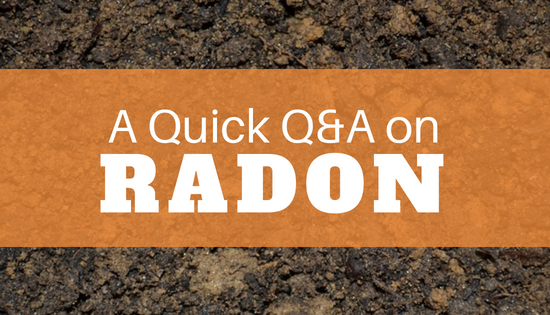A Quick Q&A on Radon
What is radon?
According to the Minnesota Department of Health…
Radon is a colorless, odorless radioactive gas that seeps up from the earth. When inhaled, it gives off radioactive particles that can damage the cells that line the lung.
Where does it come from?
Radon comes from the ground. Most soil contains traces or uranium. As the uranium breaks down over time, it turns into radium. Once the radium disintegrates it releases radon gas that rises into the air we breathe.
Why is it a problem?
Although radon occurs everywhere, it’s most dangerous in places where it accumulates to high levels such as indoors. Radon is the most common cause of lung cancer in non-smokers and the second most common cause in those who smoke. Over 21,000 cases of lung cancer can be attributed to radon each year.
How do you know if you have it?
The only way to tell if you have radon is to perform a radon test. Test kits are available online and are simple to perform. A short-term test can take just a few days and a long-term test measures levels over a period of ninety days or more. Since radon levels can fluctuate greatly over time, most experts recommend a long-term test for the most accurate reading. It’s also best to test over multiple seasons.
What do you do if you’ve got it?
The good news is that mitigating a radon problem is a fairly easy and relatively inexpensive fix. In most cases you’ll want to hire a professional who’s licensed in radon mitigation. They’ll most likely install some sort of piping that will vent the radon from the lowest level of the home up and out of the attic. Even after your system is installed you’ll still want to check periodically to make sure the radon levels in your home stay below dangerous levels.
If you’d like more information about radon, check out these resources:
Minnesota Department of Health
U.S. Department of Health & Human Services
United States Environmental Protection Agency




